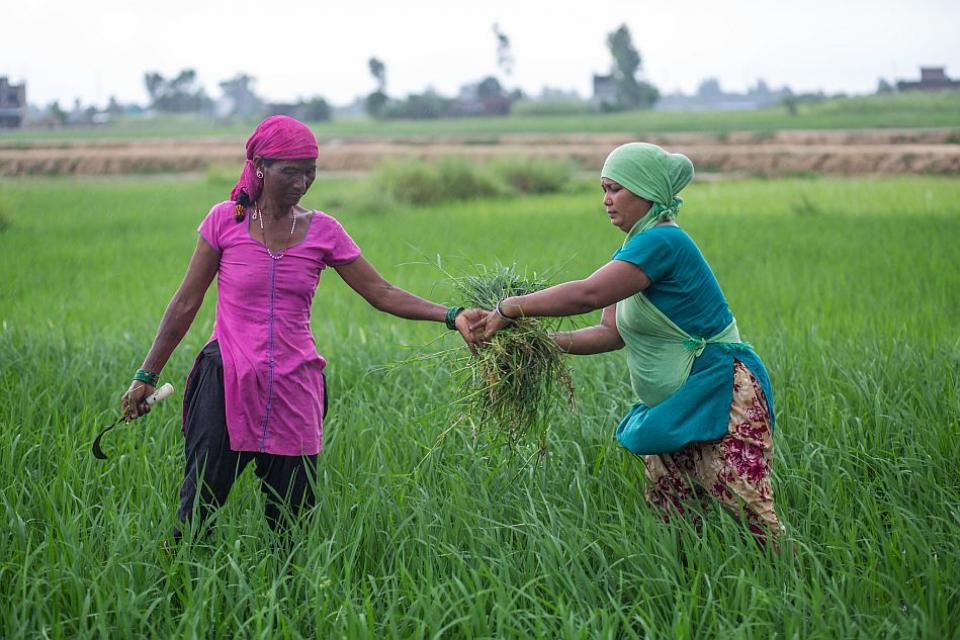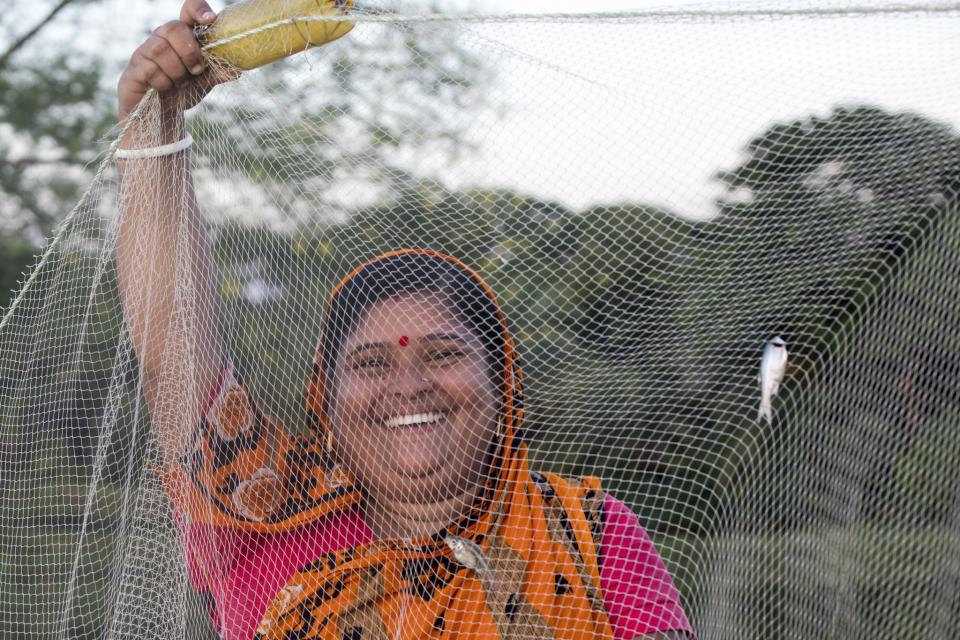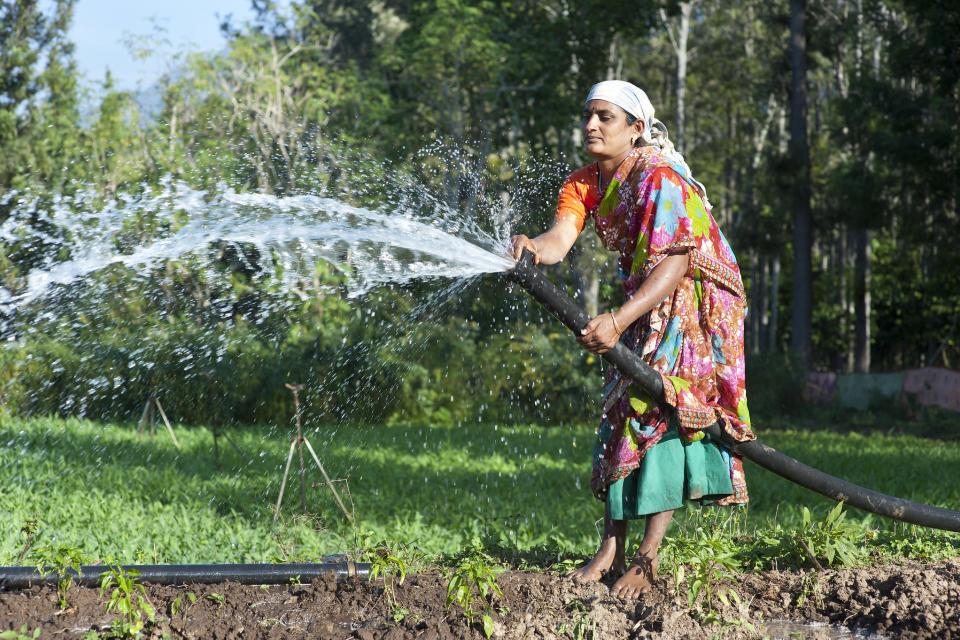Leveraging the energy transition for gender-equitable growth in rural livelihoods

A farm worker uses the water pumped from a solar water pump in a farm.
Photo Credit: IWMI/Prashanth Vishwanathan.
In the context of a global transition towards clean energy, there are opportunities for delivering carbon-neutral solutions that provide gender-equitable benefits.
Agriculture in India contributes close to 20% of GDP and employs 44% of the workforce. Of these agricultural workers, 55% are women, and this percentage is likely to increase as women have fewer opportunities than men to find non-farm jobs. On top of that, women face significantly more barriers and constraints in accessing natural resources such as water and land because – despite significant legal and social efforts – the land rights of women are not widely acknowledged.
Women also find it difficult to access credit, and knowledge about new technologies that could improve their labor productivity. In fact, the structural barriers they face in adopting any innovation which has the potential to improve their wellbeing is significantly greater than that for men. The same is true for access to energy. Women are more vulnerable to the negative impacts of lack of affordable energy – not just in their kitchens but on their farms as well. Even if they do manage to access electricity, they still have significantly fewer options to increase their income.
In the context of a global transition towards clean energy, there are opportunities for delivering carbon-neutral solutions that provide gender-equitable benefits. But at the same time, there is evidence to show that the adoption of clean fuels, or using green energy for farm and non-farm activities, does not improve gender equity but simply shifts many inequities. Green or low-carbon energy systems may not be any fairer, or more inclusive, than the systems they replace – with benefits distributed along the gender and social lines as before.
Ownership and management of energy assets is the most popular way of including women in the energy arena, but this is seldom enough. A deeper engagement is needed to deliver results – as the socio-political nature of our energy transition, if not dealt with sensitively and smartly, will simply reinforce structural inequities.


